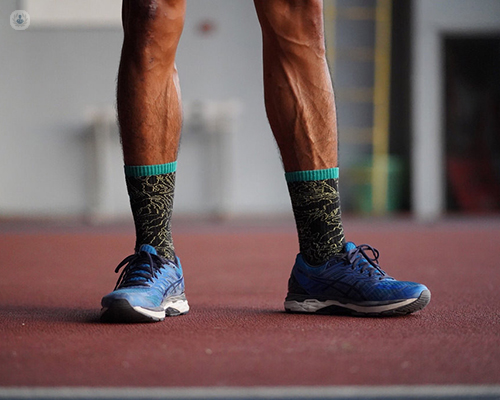Should I be concerned about my varicose veins?
Written in association with:Varicose veins are very common and whilst they are mostly not problematic, sometimes they can lead to occasional health issues. Mr S. Tawqeer Rashid, an experienced vascular surgeon, tells us exactly what risks are associated with varicose veins, and when you should seek medical advice or treatment.

What are varicose veins?
Varicose veins are veins under the skin of the legs, which have become large and visible. They can be blue, red or flesh-coloured and often look like bulging, twisting cords. Many people have them but it is not always the case that they cause a problem.
The leg has two main systems of veins:
- Deep veins – when you walk, the leg muscles squeeze the deep veins carrying most of the blood back up the legs to the heart.
- Superficial veins – these are found near the surface of the skin and are less important than deep veins but can form varicose veins.
All of these veins contain one-way valves that allow blood to flow towards the heart but prevent it from flowing backwards, away from the heart towards the legs. If these valves become leaky, then blood flows backwards down the veins. As the heart and deep veins have blood at a higher pressure than superficial veins, then blood can flow all the way back into the superficial veins. This results in an overload of pressure when standing, causing a widening of the veins so that they do not close properly. Blood flowing back into the leg along these veins causes varicose veins to develop. High pressure in these veins may then also cause spider veins (also known as thread veins) and discoloured areas which look like bruises.
Are varicose veins dangerous?
Fortunately, they are not dangerous. Although varicose veins can get worse over the years, this often happens very slowly, but here is a list of problems which varicose veins can occasionally produce:
- Phlebitis: Phlebitis (sometimes called thrombophlebitis) just means the veins have become inflamed. There is often a blood clot (thrombosis) inside the affected vein, which then becomes hard and painful to touch. This is not the same as deep vein thrombosis and is not usually dangerous.
- Bleeding: If you are unlucky and knock the varicose vein, they can bleed. This is fortunately quite rare, but if this happens, raise your leg as high as you can, press hard over the vein and call for help. It is important that the veins are then treated to remove the risk of further bleeding.
- Deep vein thrombosis (DVT): Varicose veins are associated with DVT in some patients. DVT can lead to varicose veins and skin damage around the ankle. However, it is not clear if varicose veins increase the risk of DVT.
- Leg ulcers: This is when an area of skin in the lower leg is lost and is probably the hardest to treat.
Varicose veins and leg ulcers: learn more
If you are concerned about your varicose veins, make an appointment with an expert to have them checked.


